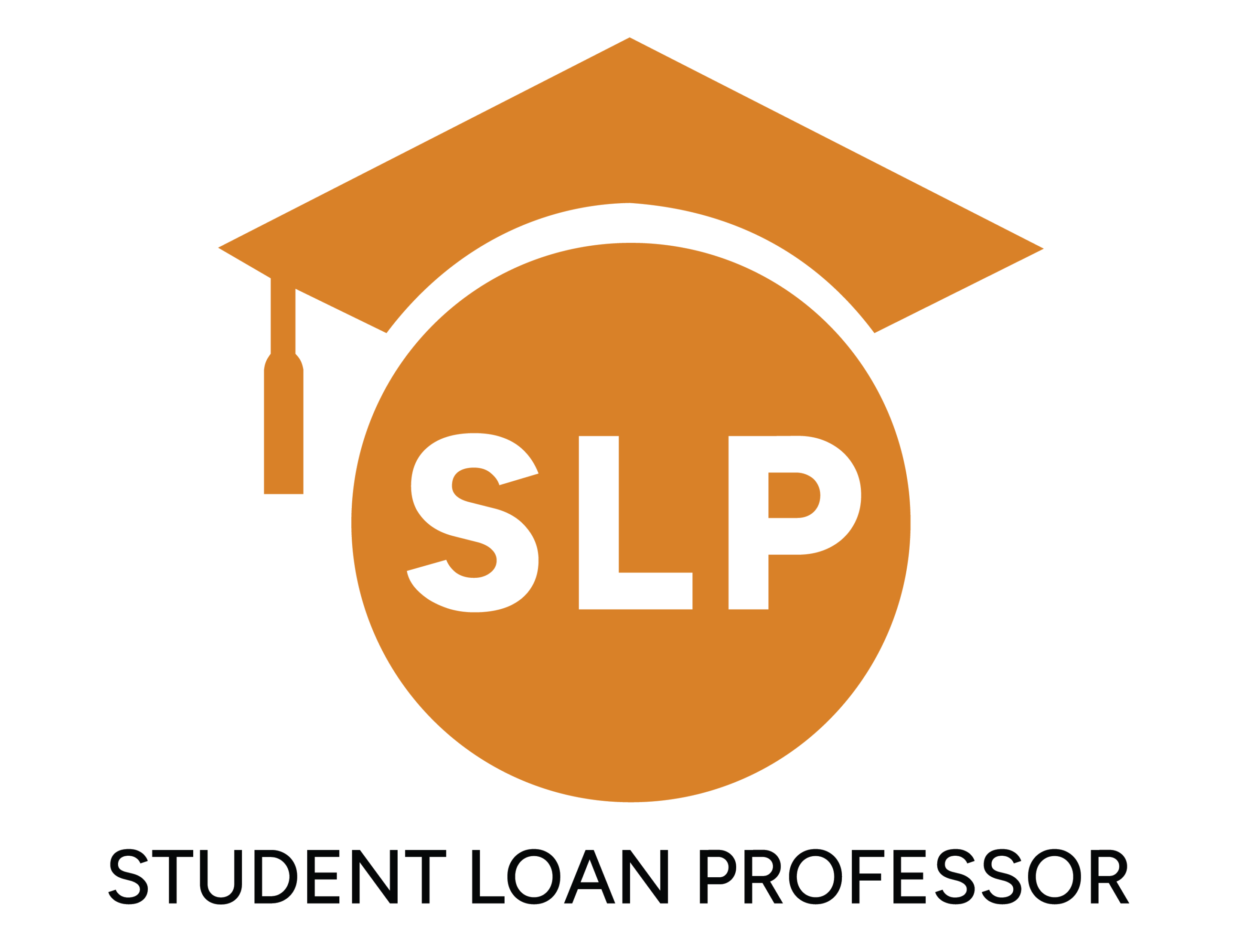Key Takeaways
- Private student loan refinancing replaces current loans for better rates or terms.
- Benefits include lower interest, simplified payments, flexible terms, and cosigner release.
- Eligibility depends on credit score, income, DTI, and lender-specific requirements.
- Compare lenders, use prequalification tools, and automate payments to maximize savings.
What is Private Student Loan Refinancing?
Refinancing private student loans involves taking out a new loan to pay off your current private loans.
The main idea behind this is usually to secure lower student loan interest rates or adjust your loan term, whether you’re aiming for a quicker debt payoff or smaller monthly payments.
Unlike federal student loans, which come with specific borrower protections, private loans don’t offer the same benefits. Some of these federal benefits include income-driven repayment plans, loan forgiveness, and other federal protections.
While refinancing federal student loans means forgoing certain federal benefits, many borrowers find it beneficial if they do not rely on these programs or protections.
Refinancing private loans, however, doesn’t come with this trade-off, making it a beneficial strategy if you qualify for a better rate or more favorable terms.
Pros and Cons of Refinancing Private Student Loans
Pros
- Lower Interest Rates: Refinancing student loans can secure lower interest rates, reducing the total loan cost over time.
- Simplified Payments: Combining multiple loans into one payment simplifies debt management, making it less likely that you’ll miss student loan payments.
- Flexible Terms: When you refinance student loans, private lenders usually offer various repayment terms, allowing you to choose between a faster payoff or a lower monthly payment.
- Cosigner Release: Many lenders offer cosigner release options, which allow you to remove cosigners from your student loan debt after demonstrating consistent repayment.
Additionally, some private loans offer benefits such as hardship deferments and discharge in cases of death or disability, helping borrowers who may want added financial protections.
Cons
- Loss of Federal Protections: When you refinance federal loans, you forfeit benefits like income-driven repayment plans and loan forgiveness, so it’s usually not advisable.
- Credit Requirements: Most private lenders require a good credit score and a steady income, which can make it challenging to refinance loans without financial stability.
- Variable Rates: Some refinancing loans come with variable interest rates, which can increase over time, leading to higher payments.
- Long-Term Interest: Extending the loan term can lower monthly payments, but you’ll likely pay more in interest over the life of the loan.
Eligibility Requirements for Private Student Loan Refinance
Whether you want to refinance federal student loans or private ones, there are general eligibility criteria that you’ll need to fulfill. These criteria help private lenders evaluate your creditworthiness and determine if you qualify.
Here are the main ones to look for:
- Credit Score: Most lenders require a credit score of at least 650, with better rates offered to those with scores in the 700s or higher. Higher credit scores can help you secure lower interest rates, potentially reducing your total loan costs.
- Income and Employment: Lenders prefer to work with individuals who have stable employment and steady income. A higher income can qualify you for a bigger loan or better rates.
- Debt-to-Income Ratio (DTI): A private lender will usually consider your DTI, which is the proportion of your monthly debt payments to your income. A lower DTI shows that you’re less likely to default on the loan.
How the Private Student Loan Refinancing Process Works
Refinancing private student loans is a straightforward process that usually includes five steps.
1. Researching Lenders
The first step in refinancing private student loans is researching and comparing various lenders. Different lenders offer distinct benefits, so take your time and look up different aspects, such as interest rates, loan terms, and borrower perks.
Some lenders provide rate discounts for setting up automatic payments or loyalty benefits if you’re already a customer. Automatic payments also help you avoid missed or late payments, which often come with hefty fines.
Use online rate comparison tools to identify competitive rates and filter options based on your eligibility. By taking the time to compare, you’ll have a better chance of finding a lender that aligns with your financial needs and goals.
2. Prequalification
Once you’ve identified potential lenders, the next step is to check if they offer prequalification. Many lenders provide prequalification tools, allowing you to get an estimated rate range without a hard credit inquiry.
This is called a soft credit pull, which means it won’t affect your credit score but can give you an idea of what rates you may qualify for based on your credit profile.
Prequalification can help you narrow down your choices without committing to a full application, giving you a clearer picture of potential rates and terms before moving forward.
It also gives you a chance to work on your credit history so you can get better rates later on if you’re not in a rush to refinance your student loan.
3. Application
After selecting a lender, it’s time to complete a formal application. This involves a hard credit inquiry, which may temporarily impact your credit score by a few points.
The lender will review key financial factors, such as your income, employment history, and credit score, to assess your eligibility.
They’ll usually ask for documents such as pay stubs, tax returns, and information about your current private or federal student loan.
This step determines whether you qualify and what specific rates and terms you’re eligible for, setting the foundation for your refinance.
4. Approval and Term Selection
After your application has been approved, you’ll get the chance to review and select your loan terms. Many lenders offer a variety of term lengths, so you can choose the option that best fits your financial situation.
Shorter terms come with higher monthly payments but reduce overall interest, while longer terms lower your monthly payments but can increase the total cost over time.
Additionally, you might be offered fixed and variable interest rates, depending on the lender’s terms and conditions.
Choosing Between Fixed and Variable Interest Rates
When refinancing, you’ll typically choose between a fixed or variable interest rate:
- Fixed Interest Rates: These rates remain constant, offering stable monthly payments and predictability. Fixed rates can be ideal if you prefer a consistent budget without worrying about rate fluctuations.
- Variable Interest Rates: Variable rates start lower but fluctuate based on market trends, which can lead to increased payments if rates rise. Choosing a variable rate may suit you if you plan to pay off the loan quickly or expect rates to remain stable.
The choice between fixed and variable rates ultimately depends on your risk tolerance and repayment timeline.
If you’re risk-averse or need budget stability, fixed rates offer peace of mind. Variable-rate loans are only beneficial if you expect the market rates to drop soon, giving you the opportunity to save money.
However, student loan refinance lenders anticipate these market changes when they offer you the initial rates, so you might be safer going with a fixed interest rate.
5. Loan Payoff and Repayment
After you finalize the terms and sign the agreement, your new lender will pay off your original loan. If you have multiple student loans, the lender will combine them and pay them off, leaving you with only the new refinanced loan.
This is known as student loan consolidation, where you combine multiple loans into one easy-to-manage loan with new terms and conditions.
With this consolidation, you’ll make monthly payments to your new lender based on the agreed-upon terms. If you opted for a lower interest rate or longer repayment term, your monthly payments might be lower, giving you greater budget flexibility.
There usually aren’t any origination fees or hidden charges. You’ll continue making your regular loan and interest payments, but they’ll now go to a new lender.
Staying consistent with on-time payments is crucial for building a positive credit history, especially if you plan on refinancing multiple times. As your credit score improves, you could qualify for better interest rates each time you refinance your loan.
When Should You Consider Refinancing Your Private Student Loans?
Private student loan refinancing can work in your favor when done correctly and at the right time. Here are a few examples of times when refinancing can be advantageous:
- Interest Rate Reductions: Refinancing can help secure a lower rate when market rates drop, reducing your monthly payment and overall interest costs.
- Improved Credit Score: If your credit score has improved since you initially borrowed, refinancing can help you secure better rates and terms.
- Income Increases: A recent salary increase may make it easier to qualify for lower rates or better loan conditions.
Potential Risks and Considerations of Private Student Loan Refinance
While refinancing private student loans has significant advantages, it also comes with certain risks, such as:
- Credit Impact: Each refinancing application involves a hard credit inquiry, which may temporarily lower your credit score.
- Fees and Penalties: Some lenders charge penalties for late or missed payments.
- Loan Term Vs. Total Cost: Extending the loan term reduces monthly payments but may increase total interest, leading to a higher overall cost.
Should You Use a Cosigner for Refinancing Private Student Loans?
Adding a cosigner can improve your chances of approval and help secure better rates, especially if you lack strong credit or steady income.
Some of the benefits of a cosigner include:
- Increased Approval Chances: Lenders are more likely to approve applications with a creditworthy cosigner, especially if you have limited credit history.
- Lower Interest Rates: A cosigner’s solid financial profile can lead to lower rates, reducing the total cost of the loan.
Remember to ask your lender if they offer cosigner release options after a set period of on-time payments.
Strategies to Maximize Savings When Refinancing Private Student Loans
Here are a few strategies that can help you maximize your savings through private student loan refinancing:
- Compare Rates Across Lenders: Use rate comparison tools to find the best available rates, terms, and perks. You can also check out a special list of top lenders curated by Student Loan Professor, with exclusive benefits for SLP clients.
- Automate Payments: Many lenders provide an interest rate discount for setting up automatic payments, often around 0.25%, reducing your rate and saving on interest.
- Choose a Shorter Loan Term: Opting for a shorter term can reduce your overall interest costs, though it may increase monthly payments. However, if your financial situation can cover it, it’ll save you more money in the long run.
Take Control of Your Private Student Loan Repayment
Refinancing student loans is an excellent way to ease your financial burden and manage your student loan debt. However, it requires a bit of research to choose the right terms, rates, and lenders.
Book a consultation with our team of refinance experts, and we’ll help you make the best decision that suits your financial goals.
Brandon Barfield is the President and Co-Founder of Student Loan Professor, and is nationally known as student loan expert for graduate health professions. Since 2011, Brandon has given hundreds of loan repayment presentations for schools, hospitals, and medical conferences across the country. With his diverse background in financial aid, financial planning and student loan advisory, Brandon has a broad understanding of the intricacies surrounding student loans, loan repayment strategies, and how they should be considered when graduates make other financial decisions.



![Our Honest Thoughts On Aidvantage Student Loans [For 2025]](https://www.studentloanprofessor.com/wp-content/uploads/2024/10/SLP_fallback_2-no-logo-400x250.jpg)

